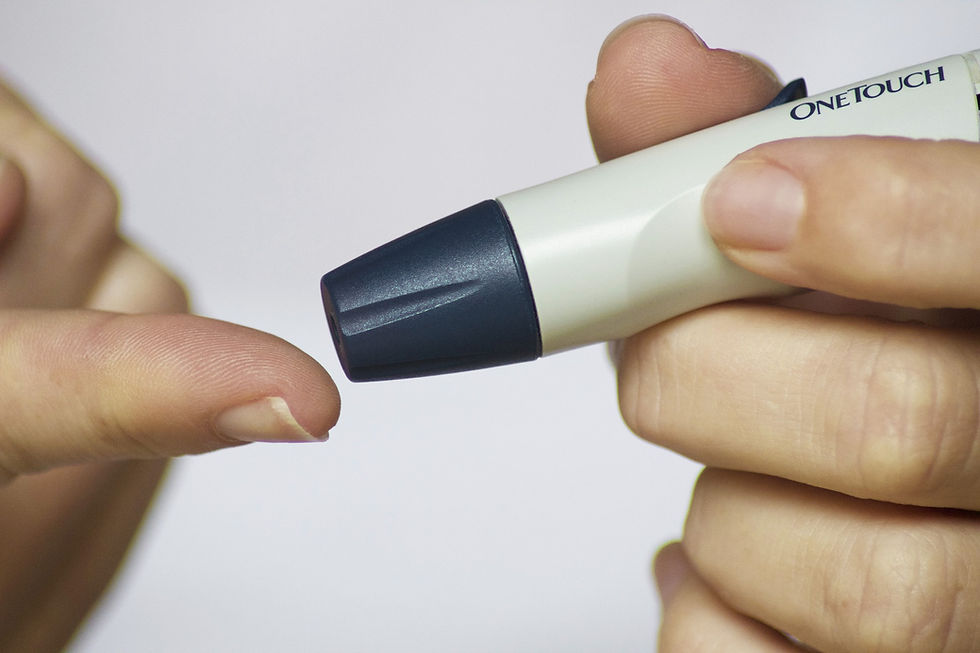Understanding the Difference Between Type 1 and Type 2 Diabetes
- alleywayy
- Aug 16, 2023
- 2 min read
Updated: Sep 6, 2023

Diabetes is a chronic illness that can significantly impact one's life. When discussing diabetes, there are mainly two types: type 1 and type 2. It is essential to understand the differences between them, especially for people that have been recently diagnosed with diabetes.
Type 1 Diabetes
Type 1 diabetes is an autoimmune disease that affects about 10% of people living with diabetes. This disorder usually occurs in children, teenagers, and young adults, but it could also develop at any age. Type 1 diabetes occurs when the body cannot produce insulin (a hormone that regulates blood sugar levels) because the immune system destroys the cells in the pancreas responsible for producing insulin. Since insulin levels are low, people with type 1 diabetes require insulin therapy to survive.
Type 2 Diabetes
Type 2 diabetes is much more common compared to type 1 diabetes. Approximately 90% of people with diabetes have type 2 diabetes. This type of diabetes usually develops in individuals over the age of 45, but recent studies show that type 2 diabetes now affects many young adults and children. Insulin resistance is the primary cause of type 2 diabetes. Insulin resistance occurs when the body becomes desensitized to insulin and cannot effectively use it to lower blood sugar levels, causing high blood sugar levels. Initially, type 2 diabetes is managed with a healthy diet, exercise, and medications. Still, in some cases, insulin therapy may be necessary.
Symptoms
There are common symptoms between the two types of diabetes, such as frequent urination, thirst, and fatigue. However, type 1 diabetes symptoms may develop rapidly, and people might experience weight loss or blurred vision, while type 2 diabetes symptoms develop gradually and may not have obvious symptoms initially. Symptoms of type 2 diabetes may include frequent infections, slow healing of wounds and cuts, and tingling sensations in hands and feet.
Treatment
The goal of diabetes treatment is to maintain healthy blood sugar levels to prevent complications. People with type 1 diabetes always require insulin therapy, while those with type 2 diabetes might require oral medications or insulin therapy, depending on the severity of the condition. A healthy diet, regular exercise, and insulin or medication are the primary management strategies for diabetes.
Diabetes is a severe condition that can significantly impact one's life. Understanding the differences between type 1 and type 2 diabetes is essential to manage the illness effectively. While type 1 diabetes is an autoimmune disorder that requires insulin therapy, type 2 diabetes usually develops due to insulin resistance and initially is managed with diet, exercise, and medication. If you are recently diagnosed with diabetes, please consult with a healthcare professional for proper care and management of your condition. With proper care, it is possible to lead a healthy life with diabetes.



Comments